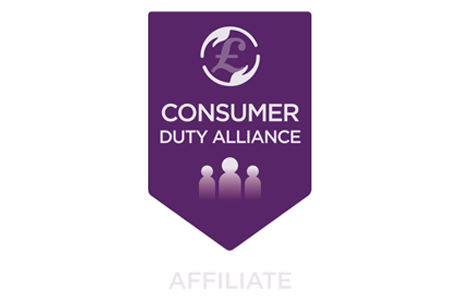There may be trouble ahead…

Bob Hunt
19 September 2024There is much to be positive about in that statistic, not least the focus existing and would-be borrowers obviously place securing advice, the service and outcome they get, and, no doubt, the protections they are afforded by using an adviser rather than going direct.
However, at the same time, we have to marry up the customers seen with the commercial imperative that is always in place for advisory firms, not least when you consider the prominence of product transfers (PT) in our market and the sharp drop-off we see in terms of procuration fee payment for the vast majority of this business.
You may have thought if you are an adviser having a bad day, ‘This job would be great without lenders’, and equally I am sure some lenders may feel when their service levels are under pressure this market would be great without advisers.
But it’s a partnership that needs each other even if at times we are ‘uneasy bedfellows’.
Both lenders and brokers are I am sure in agreement it’s great and good for the advice community to be responsible for eight or nine out of 10 mortgages sold in the country, however we must also focus on the income being derived from that business.
And, unfortunately, according to the Financial Conduct Authority’s (FCA) own retail intermediary market data for last year, the commission earned by advisers from mortgage business has dropped by quite a considerable amount – down from £1.23bn in 2022 to £1.06bn in 2023.
At the same time – and we must conclude these facts are related – this level of income earned was across 4,104 firms last year, also down compared to 4,277 in the 2022.
That’s a drop of 174 firms, and if we take an average of three advisers per firm that’s potentially 519 advisers who have left the industry.
So if the market picks up next year, as it is expected to do so, is the market potentially running into trouble by not addressing this issue where customers may not be able to get access to advice simply because of a lack of advisers.
We have seen this in the wealth management space – a recent study by Royal London reported around 39 million adults fall into this particular advice gap.
We should probably add in another aspect to this, the disconnect between the procuration fee paid by lenders to different adviser distribution channels, and the fact there is often no equilibrium between mortgage distributors/clubs like ourselves and the networks.
This, despite the fact that lenders will of course have all the management information they need to make decisions based on the quality of the business they receive, the ease with which it moves through the pipes, its ‘stickability’ for example.
And yet still many continue to plough a historic furrow, paying networks a higher proc fee despite often being presented evidence to why parity should be the norm.
Often the criticism for not sharing such data is that advisers are promiscuous; they move from club to club; and thus it’s difficult to align the lenders’ data.
It’s an interesting comment but do advisers in networks also not move around? I would suggest that such promiscuity is small given the rebate model is entrenched in the Directly Authoristed (DA) space, (invented by Paradigm of course), and if lenders stopped offering exclusives per club then such movement would be even more miniscule.
Also, despite the fact that some lenders seem to have little problem paying networks and distributors/clubs the same, lower, procuration fee for PT business yet not for new. Go figure on that one.
Ultimately, it leaves advisory firms with a significant income challenge to overcome, particularly if – as predicted – the level of PT business continues to hold firm, or as expected in 2025 grow appreciably.
I understand from a lender’s perspective asking your CFO to increase the procuration fee budget could be a difficult sell currently; after all you are retaining existing business, it could theoretically be done by the lender and there is no guarantee you will increase your new business lending as a result.
But if your agency base is diminished, your new business will be under strain and lenders do not have the capacity, capability or desire to pick up this ‘slack’.
I am therefore convinced any lender that moves will realise the ‘halo’ effect and thus grow and retain their book at the same time.
It would be great to hear from IMLA and AMI in this regard; they are unquestionably quiet on this subject and perhaps a joint initiative could be looked at for the greater market good regardless of whether you are an Appointed Representative (AR) or DA.
Of course, advisers and firms do not, and should not, be passive watchers in terms of what is happening in the mortgage market place.
They have a series of options available to them, not least the ability to move clients to a different lender, if appropriate, and secure the full remortgage proc fee rather than the lesser PT one.
In a falling interest rate environment – as I hope we are now seeing – this opportunity becomes ever stronger, whereby existing borrowers (and their advisers) do not have to simply accept the existing lender’s PT offer in order to meet affordability and secure ongoing finance.
Instead, as we know, not only can a remortgage bring in that higher income for advisers, but with remortgaging clients the ability to look at other product/service options and needs is higher because the communication and interaction is that much stronger than with a PT.
A full financial review is much easier with a remortgaging client than those simply opting to rollover into another deal from the existing lender.
So, while we will continue to push back against the lack of proc fee parity in PT and remortgage business, and the lack of parity between club and network, advisers can effectively vote with their feet here, making sure they are not only doing right by the client but also ensuring they continue to secure the income they need and do right by themselves.
Although with few signs of a lending community wanting to change, the movement has to come from advisers and firms themselves.
Make the most of the high value consumers put on advice, the client engagement that generates and current falling rates to ensure the message is heard loud and clear, and that you secure the level of payment that should be commensurate with the work you carry out, and the risks you are taking.


